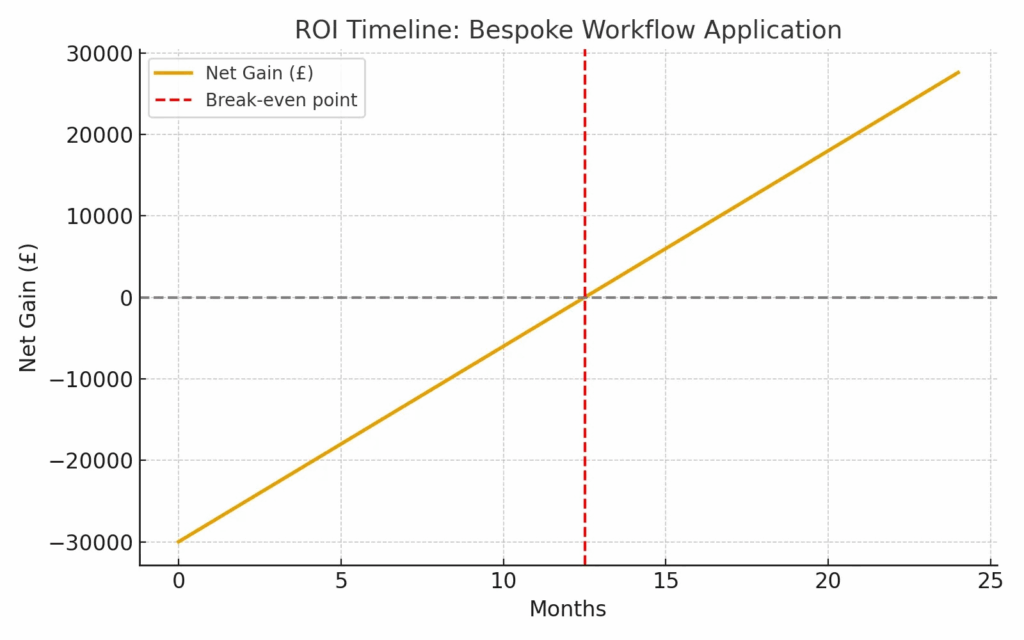Estimated reading time: 12–15 minutes
Estimated implementation time: 45–90 minutes (starting immediately after registering for Google Workspace)
Who is this for?
Technically confident individuals who understand DNS concepts but have never configured Google Workspace email authentication before. This guide provides everything needed for a clean, secure, first‑time setup without guesswork.
Overview
Setting up Google Workspace email correctly is essential for deliverability, security, and preventing spoofing. When DNS is hosted on Cloudflare, the process requires precise manual configuration — especially for businesses with strict security requirements.
This guide walks through the full process using example.com instead of a live client domain. It covers SPF, DKIM, DMARC, MTA-STS, TLS-RPT, and includes a testing protocol and AI-assisted verification.
Why Manual DNS Configuration Matters
Google Workspace will offer to automatically configure your DNS when adding a new domain. Do not allow this. Always choose manual configuration.
Manual control ensures:
- DNS settings never get overwritten
- Cloudflare security features remain intact
- You maintain consistent SPF, DKIM, DMARC, and MTA-STS policies
Step 1 — Verify the Domain in Google Workspace
In the Google Admin Console:
- Go to Apps → Google Workspace → Gmail → Setup
- Copy the verification TXT record
- Add it to Cloudflare DNS:
Name: @
Type: TXT
Value: google-site-verification=xxxxxxxxx
Step 2 — Add Google Workspace MX Records
Use the modern single-record MX provided by Google:
Name: @
Type: MX
Priority: 1
Value: smtp.google.com
TTL: Auto
Proxy: DNS Only
Step 3 — Configure SPF (with Optional Web Host Include)
SPF specifies which mail servers are authorised to send email for your domain.
If you also send mail through your web host (e.g., transactional mail from forms), include its SPF entry. If not, omit it.
Basic Google Workspace SPF
Name: @
Type: TXT
Value: v=spf1 include:_spf.google.com -all
Google Workspace + Optional Web Host
Name: @
Type: TXT
Value: v=spf1 include:_spf.google.com include:_spf.examplehost.com -all
Notes:
- Only one SPF record may exist.
- Use -all for strong anti-spoofing.
Step 4 — Enable and Publish DKIM
- In Admin Console: Gmail → Authenticate Email
- Select 2048-bit DKIM key
- Google generates a TXT record:
Name: google._domainkey
Type: TXT
Value: (DKIM public key)
- Add it to Cloudflare
- Click Start Authentication
Step 5 — Add a DMARC Policy
DMARC prevents spoofing and requires alignment between SPF/DKIM and the From domain.
Name: _dmarc
Type: TXT
Value: v=DMARC1; p=reject; adkim=r; aspf=r; pct=100
Notes:
- Relaxed alignment (r) avoids issues when Gmail rewrites headers.
- Strict alignment (s) provide maximum enforcement but may cause DMARC failures if aliasing or forwarding is involved. We have been unable to use strict alignment with Google Workspace and avoid emails dropping into SPAM.
Step 6 — Configure MTA-STS (Recommended for High-Security Domains)
MTA-STS enforces TLS during SMTP delivery and prevents downgrade/MITM attacks.
Step 6.1 — Add TXT Declaration
Name: _mta-sts
Type: TXT
Value: v=STSv1; id=20250101
Step 6.2 — Create the HTTPS Policy File
Create a folder structure on your computer:
mta-sts/
.well-known/
mta-sts.txt
Inside mta-sts.txt:
version: STSv1
mode: enforce
mx: smtp.google.com
max_age: 604800
Step 6.3 — Deploy via Cloudflare Pages
- Go to Workers & Pages → Pages → Create a Project
- Choose Upload Assets
- Upload the mta-sts folder
- Deploy
- Add a custom domain: mta-sts.example.com
Step 6.4 — Add CNAME in Cloudflare DNS
Name: mta-sts
Type: CNAME
Value: <yourproject>.pages.dev
Proxy: Proxied (orange)
Step 6.5 — Verify
Visit:
https://mta-sts.example.com/.well-known/mta-sts.txt
Use:
- https://www.hardenize.com
- https://ssl-tools.net/mta-sts
Step 7 — TLS Reporting (Optional)
Name: _smtp._tls
Type: TXT
Value: v=TLSRPTv1
If you want reports:
v=TLSRPTv1; rua=mailto:tls@example.com
Step 8 — Testing Protocol (Critical)
8.1 Send a Baseline Test Email
From user@example.com to a Gmail address.
Check:
- Does it arrive?
- Does it land in the Inbox or Spam?
8.2 Analyse Headers in Gmail
- Open the message → three dots → Show original
- Confirm:
- SPF: PASS
- DKIM: PASS
- DMARC: PASS
- SPF: PASS
8.3 AI-Assisted Authentication & DNS Analysis
Email Header Analysis
Download full header and original email source → paste into AI → ask:
- Why did SPF/DKIM/DMARC pass/fail?
- Are domains aligned?
- Any forwarding or alias issues?
DNS Zone File Analysis
- Cloudflare → DNS → Export
- Upload zone file to AI
- Ask it to review:
- Duplicate/conflicting SPF records
- DMARC placement (_dmarc)
- DKIM selector presence
- MTA-STS records and CNAMEs
- TXT formatting issues
- Duplicate/conflicting SPF records
8.4 Re-test After Any Change
Send a fresh email with a new subject (Test 2, Test 3) until:
- SPF = PASS
- DKIM = PASS
- DMARC = PASS
- Inbox placement is consistent
Example Cloudflare DNS Configuration (Using
example.com)
;; MX
example.com. IN MX 1 smtp.google.com.
;; SPF
example.com. IN TXT "v=spf1 include:_spf.google.com -all"
;; DKIM
google._domainkey.example.com. IN TXT "v=DKIM1; k=rsa; p=MIIBI..."
;; DMARC
_dmarc.example.com. IN TXT "v=DMARC1; p=reject; adkim=r; aspf=r; pct=100"
;; MTA-STS
_mta-sts.example.com. IN TXT "v=STSv1; id=20250101"
mta-sts.example.com. IN CNAME mta-sts-example.pages.dev.
;; TLS-RPT
_smtp._tls.example.com. IN TXT "v=TLSRPTv1"
;; Google verification
example.com. IN TXT "google-site-verification=xxxxxxx"
Conclusion
By following these steps, you ensure:
- Fully authenticated outgoing email
- Protection against spoofing and phishing
- TLS-enforced mail transport
- High deliverability to Gmail, Outlook, Microsoft 365, Yahoo, and more
- A hardened configuration suitable for security-sensitive organisations
This setup represents our best-practice Google Workspace email configuration when using Cloudflare as your DNS provider.
Important Caveat
Technical standards, Google Workspace authentication rules, and Cloudflare DNS behaviours change over time. Although this guide reflects what we believe to be a correct and working configuration at the time of writing, email security protocols evolve, and configuration errors can occur.
Readers should:
Verify all SPF, DKIM, DMARC, MTA-STS, and TLS-RPT records before deployment
Check the current Google Workspace documentation
Check Cloudflare’s latest DNS guidance
Validate settings with external tools (Hardenize, MXToolbox, SSL Tools)
Always double‑check before applying changes to a production environment. Your deliverability and domain security depend on accuracy.


